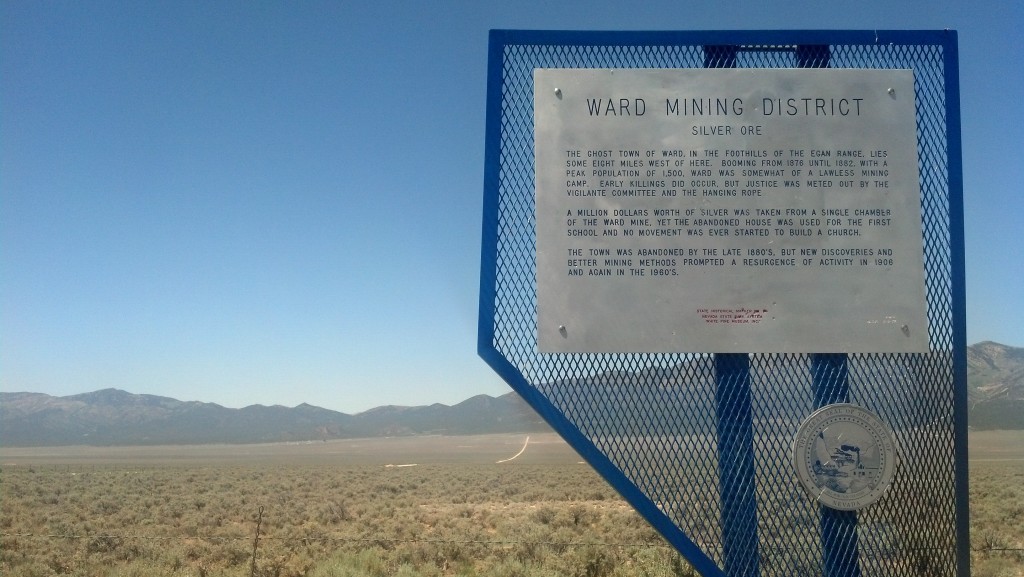
A historic marker near the ghost town of Ward, Nev., notes how the “vigilante committee and the hanging rope” helped keep the peace. (Photo by Michael E. Grass)
WARD, Nev. — In Travels With Charley, John Steinbeck wrote that “those states with the shortest histories and the least world-shaking events have the most historical markers. Some Western states even find glory in half-forgotten murders and bank robberies.”
For such an empty place, Nevada is full of historic markers. Many of the ones I encountered in the central part of the state — and I suspect elsewhere, too — celebrate the state’s rich mining heritage. The sign marking the ghost town of Osceola, northwest of Mount Wheeler in Great Basin National Park, notes how the nearby mining operations there once produced a gold nugget valued at $6,000. (I’m assuming that was a big deal at the time but nothing like the Comstock Lode.)
Closer to Ely, a marker off U.S. 93 celebrates the mining heritage of the ghost town of Ward, a place which was “booming from 1876 until 1882” before it was abandoned. Ward was a lawless place and from its description sounded like the type of settlement that could have inspired a John Wayne movie.
“Early killings did occur, but justice was meted out by the vigilante committee and the hanging rope,” according to the marker.
For the most part, there’s nothing left of these ghost towns. In the case of Ward, the roadside marker was miles from the actual site of the town, off-limits on the property of the modern-day mining operation. But Ward’s beehive-shaped charcoal ovens beehive-shaped charcoal ovens are certainly worth checking out.

